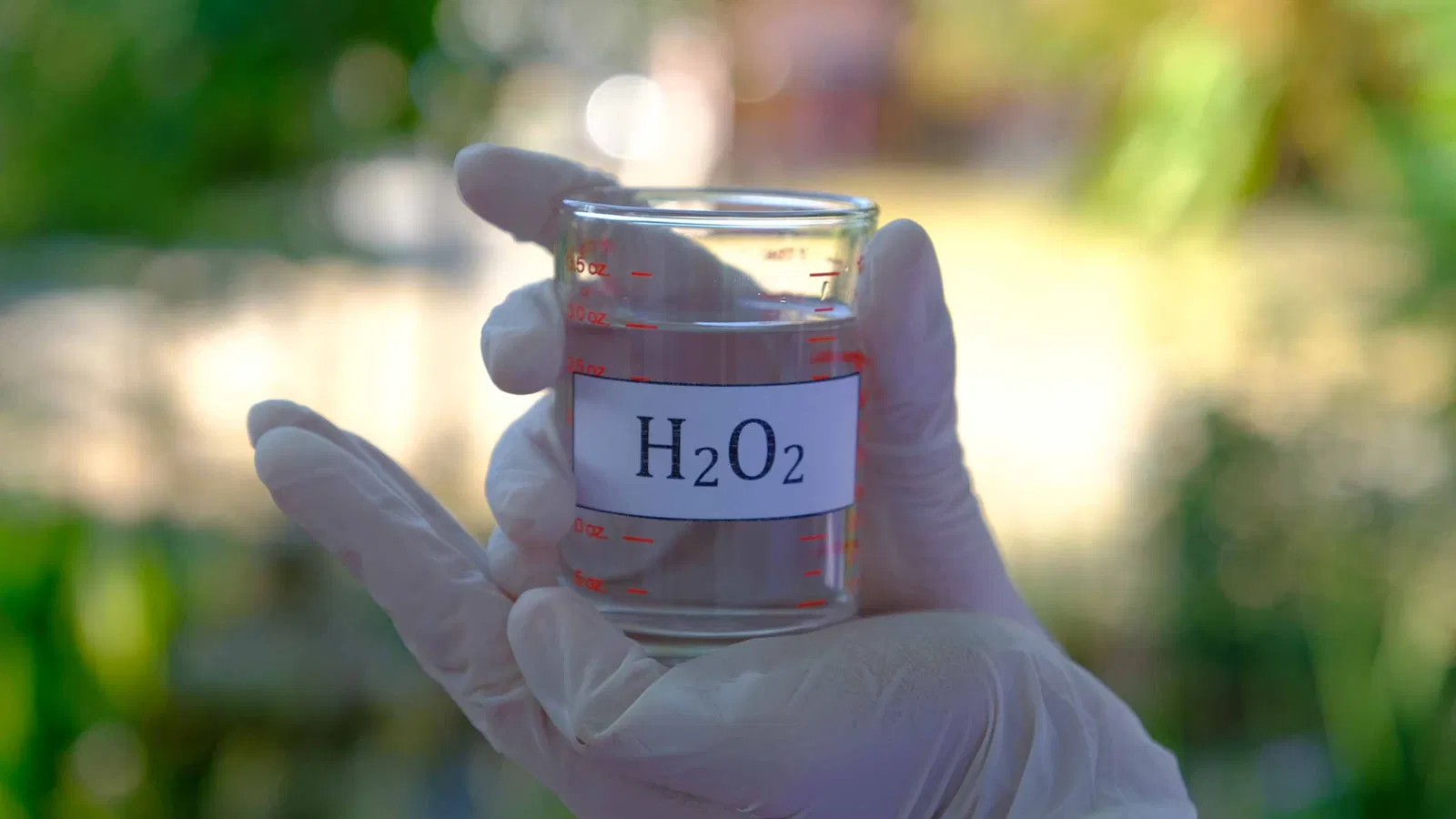Hydrogen Peroxide for Skin Tags and Warts: What You Should Know Before Trying It
Skin tags and warts are among the most common benign skin growths people encounter in their lifetime. While harmless, they can be frustrating, sometimes uncomfortable, and often a cosmetic concern. Many people look for simple, at-home solutions to manage them—one of which is hydrogen peroxide.
Hydrogen peroxide is widely known as a household disinfectant and bleaching agent, but some also use it as a topical remedy for certain skin conditions. In this article, we’ll explore how hydrogen peroxide is thought to work on skin tags and warts, what precautions to keep in mind, and why medical guidance should always come first.
How Common Are Skin Tags and Warts?
Skin tags and warts are surprisingly widespread. According to the National Institutes of Health (NIH), nearly half of all adults will develop at least one skin tag at some point in their lives. Similarly, WebMD notes that most people will experience a wart at least once, often during childhood or adolescence.
Because they’re so common, many individuals turn to natural remedies, over-the-counter products, or clinical procedures to manage them. But before considering hydrogen peroxide—or any treatment—it’s helpful to understand what these growths are and why they form.
What Are Skin Tags?
Skin tags, medically called acrochordons, are small, soft pieces of skin that typically hang by a thin stalk. They are:
-
Harmless and noncancerous.
-
More common in adults over 40.
-
Frequently linked to factors such as genetics, obesity, diabetes, and hormonal changes.
-
Commonly found in areas where skin rubs together, such as the neck, armpits, groin, under the breasts, and eyelids.
While not dangerous, skin tags can become irritated by jewelry, shaving, or clothing. Many people seek removal simply for comfort or cosmetic reasons.
What Are Warts?
Unlike skin tags, warts are caused by a virus—the human papillomavirus (HPV). They appear as small, rough-surfaced growths that most often occur on the hands, feet, or knees. Key facts about warts include:
-
They spread through direct skin-to-skin contact or shared items like towels and shoes.
-
Scratches or cuts increase the risk of infection since the virus enters through broken skin.
-
Some types, like plantar warts on the feet, can be painful because they grow inward under pressure.
Because warts are viral, they can spread to other body parts or even to others. This is why many people try to treat them promptly.
Why Proper Diagnosis Is Essential
Before attempting at-home remedies such as hydrogen peroxide, it’s critical to confirm that the growth is truly a skin tag or wart. Some lesions may resemble them but could be moles or other growths that require professional evaluation.
Dermatologists strongly recommend seeking medical advice if:
-
The growth changes color, shape, or size.
-
There is bleeding, pain, or persistent irritation.
-
You are uncertain about the diagnosis.
A correct assessment ensures safe and effective treatment while ruling out potentially serious conditions.
Hydrogen Peroxide: A Household Chemical with Many Uses
Hydrogen peroxide (H₂O₂) is a common antiseptic, widely used to disinfect minor cuts and wounds. Beyond medical first aid, it has applications in oral care, cleaning, and food safety.
In higher concentrations, hydrogen peroxide has a caustic effect on tissue. This is why some individuals apply it directly to warts and skin tags: it causes targeted damage to the growth, leading it to dry out and eventually fall off.
It is important to stress, however, that this method is not universally endorsed by doctors. While hydrogen peroxide can be effective for some people, improper use can cause irritation, burns, or scarring.
What Type of Hydrogen Peroxide Is Used?
The type of hydrogen peroxide matters greatly.
-
3% hydrogen peroxide: The common over-the-counter version sold in pharmacies. It is mild and safe for wound cleaning but often too weak for wart or skin tag removal.
-
35% food-grade hydrogen peroxide: A much stronger concentration sometimes used in alternative remedies. This version is caustic, must be handled with extreme care, and is generally purchased online rather than in stores.
Storage Tips
-
Keep in a dark, cool place, as heat and light break it down.
-
For long-term use, some recommend storing it in the freezer.
-
Always label the bottle clearly and keep it away from children and pets.
Safety Precautions
-
Never ingest hydrogen peroxide—it is toxic.
-
Wear gloves when handling higher concentrations.
-
Apply only to the affected area, avoiding healthy skin.
How Hydrogen Peroxide Is Applied
Those who use hydrogen peroxide for skin tags or warts often follow a simple step-by-step method:
-
Prepare the area.
-
For plantar warts, gently file away the top layer with a pumice stone or nail file.
-
-
Apply carefully.
-
Dip a cotton swab into hydrogen peroxide and dab directly on the skin tag or wart.
-
Avoid contact with surrounding healthy skin.
-
-
Repeat consistently.
-
Apply 3 to 5 times daily for one to two weeks.
-
-
Observe the changes.
-
The treated spot may turn white at first—this is normal.
-
Over time, the wart or skin tag may darken, scab, and eventually fall off.
-
For plantar warts, which grow deeper into the skin, longer treatment may be necessary.
Risks and Considerations
While hydrogen peroxide may help, it is not without risks. Potential downsides include:
-
Skin irritation or burns from high concentrations.
-
Scarring, particularly if applied too aggressively.
-
Delayed healing if used on sensitive areas such as the eyelids.
For these reasons, dermatologists often recommend clinical treatments such as cryotherapy (freezing), electrocautery (burning), or minor surgical removal instead of at-home remedies for stubborn or sensitive cases.
Alternatives to Hydrogen Peroxide
If hydrogen peroxide seems too harsh, other options include:
-
Apple cider vinegar: A popular natural remedy for warts and skin tags, though also caustic if overused.
-
Over-the-counter wart treatments: Salicylic acid-based gels and pads that gradually peel away warts.
-
Professional removal: Quick and effective when performed by a dermatologist.
Final Thoughts
Hydrogen peroxide is a low-cost, widely available chemical that some people use to manage skin tags and warts at home. When applied carefully, it may help these growths dry out and eventually fall away. However, because stronger concentrations can damage skin and cause side effects, this approach should be used with caution.
Most importantly, anyone considering at-home treatment should first ensure the growth is benign and safe to treat. A brief consultation with a dermatologist can confirm the diagnosis and suggest the safest, most effective options.
Patience and consistency are key—warts and skin tags rarely disappear overnight. With proper care and realistic expectations, hydrogen peroxide may be part of a broader toolkit for managing these common skin concerns.

Adrian Hawthorne is a celebrated author and dedicated archivist who finds inspiration in the hidden stories of the past. Educated at Oxford, he now works at the National Archives, where preserving history fuels his evocative writing. Balancing archival precision with creative storytelling, Adrian founded the Hawthorne Institute of Literary Arts to mentor emerging writers and honor the timeless art of narrative.
